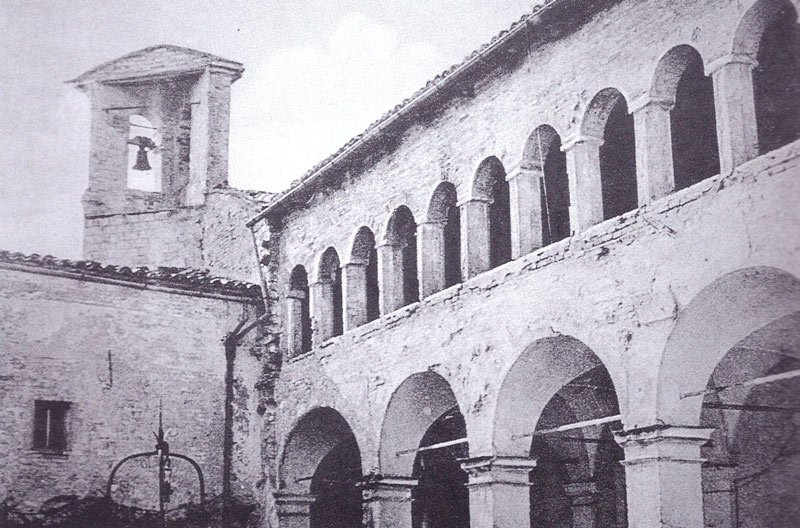
The Abbey of Saint Benedict in Castelplanio
By museosartarelli on 20 March 2018 in History
The Abbey is commonly called the “badia” but it is officially the Abbey of Saint Benedict de’ Frondigliosi from Castelplanio. Mentioned in books for the first time in 1199, the abbey belonged to the Abbey of Saint Helena on the Esino river. Its ancient core dates back to around the year 1000, two centuries before its name could be found in books. The rest of the construction scheme follows the structure of the castle below, which was formed and consolidated during the 13th and 14th centuries. In the meantime the meanwhile the Benedictine monks began to lose their power so much that the troops of Jesi decided to attack them in 1294. From then on the monks most probably no longer lived there. In 1457 it became property of the bishops of Jesi and as their summer residency various alterations were made to adapt it to their needs.
Among these bishops was Cardinal Camillo Borghese, future Pope Paul V (1605-1621), and Bishop of the City of Jesi at that time for just two years (1597-1599) stayed at the abbey for about 15 days in July 1598. He lived in Rome and ruled over the diocese through his general Vicar. He was the first one of a series of bishops who honored the diocese of Jesi by wearing the purple garment (distinctive color of the Cardinals) in the Vatican from 1600 to the second half of the 19th century. The last one to inhabit the abbey was Cardinal Carlo Luigi Morichini, bishop of Jesi, from 1854 to 1871. He had a predilection for the “badia” because of the peace and serenity which could be enjoyed there. The sociologist and diocesan pastor as well poet, who wrote poems in Latin, Carlo Luigi Morichini, founded a literary club together with some of the most cultured priests of the diocese with whom he spent his days talking about culture in Latin. In one of his Epistolae (letters), the No. 7 (verses 32-34) dedicated to Castelplanio “Arx Planina”, he writes “non ego certe / Planinispernam collis tua munera, Bacche” i.e. ” it certainly will not be me the one, who will not appreciate, oh Baccus, the gifts you donated to the hills of Castelplanio”. This clearly refers to the vineyards, as well as to the wine which they produced, and which surrounded the “badia” already in the 17th and 18th centuries so as a painting and map of that time shows us. Even today Morichini’s poems which are of a very bucolic-Virgilio style mixed with feelings of friendship and familiarity are a source of inspiration.
Prof. Riccardo Ceccarelli


